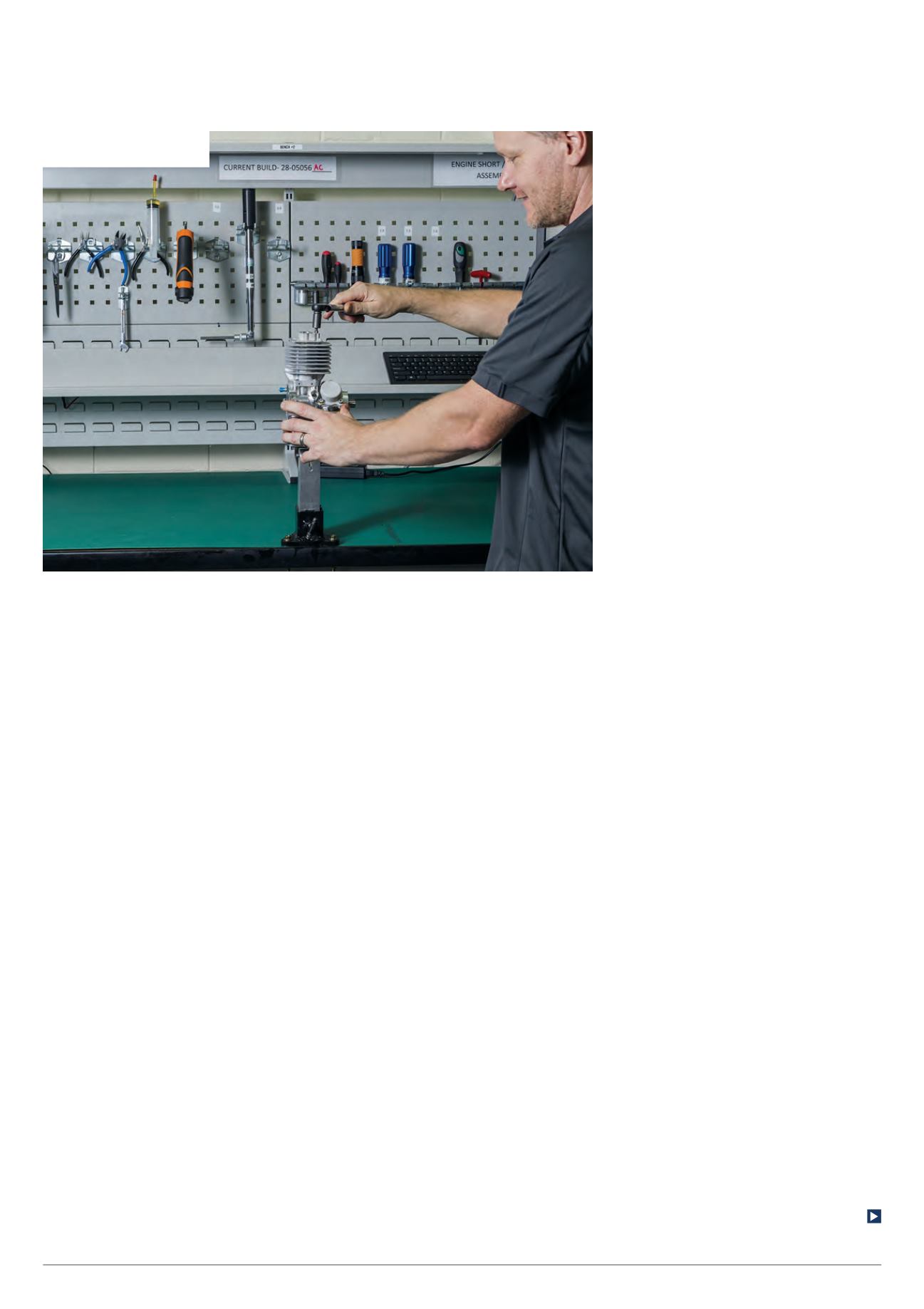

62
operating range and is very tolerant of
changing conditions.”
Cathcart reports that the robustness
of FlexDI is such that engine calibration
doesn’t have to be individually tailored
to each example of a production
engine batch. That means there is no
requirement for any end-of-line tuning.
Kerosene-based heavy fuel is low
in octane rating, which means it has a
propensity to knock; using FlexDI, the
fuelling can be tailored to avoid knocking.
In effect, the amount of time the fuel
spends in hot chamber conditions can
be reduced by delaying the injection
event. This ability to avoid knock enables
the use of a compression ratio in excess
of 10:1, which in turn provides improved
fuel efficiency.
Beloy notes that the fuel efficiency
advantage of the N20 is seen most
prominently when the craft is in cruise
and loitering modes. He adds, “A further
advantage of FlexDI is that since the
engine can maintain robust, reliable
combustion across a relatively wide
range of cylinder temperatures, an active
cooling system is not required and
wider temperature limits are established,
affording users the ability to operate the
rest of the system without the need to
constantly monitor engine temperature.”
This, Beloy notes, is particularly significant
in the case of a UAV, which typically
experiences a wide temperature variation
between ground level and flight altitude.
N20 FlexDI fuelling system
The N20 draws air into its crankcase
through an air filter, a throttle body with
a butterfly throttle and a reed valve (in
that order). Cathcart notes that intake
tuning revolves around the length of the
throttle body and its interaction with the
air filter. However, he adds that “most
tuning is on the exhaust side”, as with
any two-stroke that exploits pressure
waves to enhance cylinder scavenging
and thus cylinder filling.
The relative simplicity of a reed valve
compared with a rotary is seen as
advantageous in terms of saving weight.
At the same time, its inherently superior
response at lower engine speeds is seen
as the basis of a flatter torque curve,
which is considered more important than
any peak power gain that could be made
by using a rotary valve.
The exhaust port is to the right-hand
side of the cylinder, while the transfer
ports are adjacent, four in total – two
main outer ports sandwiching a pair of
secondary ones. The transfer ports are
arranged to create loop scavenging.
Avoiding the need for a piston crown
deflector, loop scavenging directs
the incoming charge air towards the
combustion chamber such that it
follows its curvature and is deflected
downwards again. Thus the air makes a
loop that discourages it from escaping
through the exhaust port but helps push
out the exhaust gas and at the same
time creates a swirling turbulence that
enhances combustion.
The combustion chamber in the N20
head is a recess with a tapered squish
band as its extremity. The form of the
piston crown is undisclosed. The fuel
injector is vertical and on the central axis
of the cylinder, while the plug is angled
at 45
º
and is located above the exhaust
port. Both the injector and the plug enter
the chamber in the recess, which can
accept either one or two plugs.
The FlexDI fuel injector has twin,
independently controlled solenoids. An
upper solenoid meters the fuel supply into
the chamber where the compressed air
is admitted; a lower solenoid controls the
outward-opening pintle that admits fuel
to the combustion chamber. The air can
only flow when the pintle opens and, as
noted, it carries the fuel into the chamber.
Beloy remarks that a lot of
development has gone into fuel delivery,
in ensuring that pick-up in the fuel tank
works down to a very low level despite
the g-forces to which a lightweight UAV
is subject in flight. This has meant paying
close attention to the control of slosh in
the tank and to the pick-up position. It
has also led to the use of a header tank
inside the main tank.
Fuel is supplied by an electric
pump submerged in the header tank
to a pressure regulator in the fuel rail
assembly atop the N20. The pressure
regulator has a spring-loaded diaphragm
that lifts to return excess fuel to
June/July 2016 |
Unmanned Systems Technology
Dossier
|
Insitu N20 UAV 50 cc two-stroke single
The N20 two-stroke has air
cooling of its single cylinder









